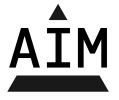
Table of Contents
- Abstract
- Introduction
- Effect of Motivation on Self-efficacy
- Methods
- Results and Discussion
- Conclusion and Future Work
- References
Abstract
Comparative analysis of self-efficacy was done across schools’ streams. Self-efficacy is considered as the belief and confidence of students towards their efforts for achieving success and high scholastic performance during their academic pursuits.The present study was undertaken to assess the comparative analysis of self-efficacy and scholastic performance of the students pertaining to the high school male students in the province of Khyber Pakhtunkhwa, Pakistan. The main objective of the study was the comparative analysis the self-efficacy and scholastic performance of the students across various streams. A total of 5 out of the 17 Government Higher Secondary Schools for Boys located in Nowshera, Khyber Pakhtunkhwa covered the study population. The data was collected from 488 students with the help of a 19 items self-efficacy questionnaire. The data was analyzed applyingt-test by using Statistical Package for Social Sciences (SPSS-17). The study results revealed a significant difference between self-efficacy and scholastic performances of the students across various streams. The comparative analysis of self-efficacy and students’ scholastic performance shows that students having different scheme of studies have different levels of self-efficacy. The study contributes significantly towards understanding the exact nature of relationship between the self –efficacy and scholastic performance. On the basis of comparative analysis of self-efficacy and students’ scholastic performance, recommendations have been made to enhance self-efficacy for students’ motivation and success in their career. Further, it has been suggested to arrange different type of activities like competition program and expert lectures for awareness and boosting self-efficacy of students to enhance their performance.
Read More: Comparative Analysis of Self-efficacy
Introduction
Self-efficacy is the one’s belief that he/ she has the power to produce desired result by carrying out a given task or activity according to the competency. Self-efficacy is a person’s perception of their capability to achieve the set objectives/ aims. It is a confidence about one’s own abilities to perform certain tasks in a certain manner to attain goals. It refers the expectancy that one can master a situation and produce a confident conclusion (Bandura, 2012).
Self-efficacy may be defined as a person’s personal opinion or self-perception of performance capabilities based on prior outcomes, attributions, ability, present circumstances, perceived similarity, effort required and persuader credibility. The importance of student characteristics is to impress upon the teacher that a student entering a classroom is not a “new” student but one with a history of experiences with learning. Experiences are based upon previous experiences and follow the expectancy principle (Schunk, 1995).
Goal setting plays an important part in efficacy theory and involves comparing present outcomes with desired standardsrealistically. Progress towards specific, proximal goals of moderate difficulty is seen as being able to increase a student’s self-efficacy. Metaphorically,these explicit goals are set to give students a bright light to walk towards which is not too far away and over ground with stable footing (Khan, 2001).
According to theories and researches related to self-efficacy, self-efficacy expectancy makes a difference in how people feel (affection), think (cognition) and act (motivation and behaviour). In terms of affection, a low sense of self-efficacy is associated with depression, anxiety and helplessness.
Such individuals also have low self-esteem and harbour pessimistic thoughts about their accomplishments and personal development. In terms of cognition, a strong sense of competence facilitates cognitive processes in a variety of settings including quality of decision-making and academic achievement. Lastly, in term of preparing action, self-related cognition is a major ingredient of the motivation process. Self-efficacy levels can enhance or impede motivation (Bandura 1995).
Khan (2001) conducted a research on self-efficacy to observe the effects of self-efficacy on the scholastic performance of the students.However, his research focused mainly on the area of science subjects. The outcome of the study showed that there was a positive correlation between self-efficacy and the score of the learners in science subjects.The results of his research concluded that self-efficacy had a significant effect on the scholastic performance of the students. These finding also suggest that there is no difference on gender basis. In short, from this study it is also clear that self-efficacy plays key role in the scholastic performance of learners.
Read Also: Self-efficacy Practicability
Effect of Motivation on Self-efficacy
Motivation is a desire or aversion (wants to do something, or want to evade something). External or objective aspect of motivation is a goal or thing you desire to – and an internal or subjective aspect of motivation is that it is you who desire the thing or wants it to let it go.
Minimally, motivation needs the natural substrate for pleasure and pain sense. Motivation moves on to include the ability to make and generalize concepts which enable humans to exceed this minimum state with the greater range of needs and aversions (Motivation, 2020).
Self-efficacy and Attribution
Self-efficacy also seems to be related to attribution. People with a strong sense of self-efficacy for a given task attribute their failures to lack of effort. People with a low sense of self-efficacy tend to attribute their failures to lack of ability. If a student held in entity view and low sense of self-efficacy, motivation would be destroyed when failures were attributed to lack of ability (Bandura, 1997).
Ability feedback had a stronger effect on self-efficacy and performance (Schunk,1983). Skill training and attribution feedback role are mediated by Self-efficacy and had a direct effect on learned helpless graders performance. Attribution feedback displayed a moderate effect on students’ performance and a stronger indirect effect arbitrated by self-efficacy (Relich, Debus, & Walker, 1986).
Students with similar previous performance attainments and cognitive skills may differ in subsequent performance as a result of different self-efficacy perceptions because these perceptions mediated between prior attainments and academic performances.
As a consequence, such performances are generally better predicted by self-efficacy than by the prior attainments. Schunk (1991) suggested that variables such as perceived control, outcome expectations, perceived value of outcomes, attribution, goals and self-concept may provide a type of cue used by individuals to assess their efficacy believes.
Developmental Perspective of Self-efficacy Belief
Sensitivity to contextof self-efficacy belief makes it an ideal vehicle for the exploration of differences in perception of competence as a function of developmental factors. The competence perception always has different meaning at different time in the life of individual (Wighfield & Karpathian, 1991).
Nicholls (1984) suggested that young and the children have the tendency to see efforts and ability as complementary; but when they join the school and they grow in age.
Such things become contradictory.When a person or a learner understand in a right way that how to develop the academic self-efficacy belief, schooling influence and the developmental factors which make contribution to the change in self-efficacy will definitely require the longitudinal investigation which assess self-efficacy with allegiance to the theoretical guidelines.
For the better and right improvements, it is required to know about the different factors that how students use efficacy at various ages and school level. Even, it will be better to know that how they use it at different grades. (Nicholls & Miller, 1984).
Methods
A total of 5 out of the 17 schools participated in this research. To address study objectives and to draw comparison between Grade XI students of different streams studying at Government Higher Secondary Schools, a purposive sampling technique was applied. Total students were 488 in which 92,92,63,243 were studying in Pre-Medical, Pre-Engineering, Computer Science and Humanities group respectively. The students belonged to different social backgrounds and diverse abilities.
Departmental Board of Studies gives approval for the research after making review by the concerned supervisor. After this Board of Advanced Study and Research (BASAR) also approved, and the permission was given to conduct the present research. After proper approval the students were approached for the collection of data.
Results and Discussion
The independent-samples test was applied for comparative analysis of self-efficacy and students’ scholastic performance. The aim was to investigate the difference between mean scores of pre-medical students of GHSS A,B and C on self-efficacy.
The value of Levine’s Test of Equality (GHSS A & B = .00 and GHSS A & = .00) showed that equal variances were not assumed. Students of GHSS A, GHSS B and GHSS C have same self-efficacy. The results show statistical non-significant difference between self- efficacy scores of GHSS A and B t (41.72) = .79, p = .43; and GHSS A and C t (38.70) = 1.60, p = .11, therefore, the null hypothesis was accepted.
The independent-samples test was applied for comparative analysis of self-efficacy and pre-medical students’ scholastic performance. The investigation was done to find the difference between mean scores of pre-medical students of GHSS A and GHSS E on self-efficacy.
The value of Levine’s Test of Equality (GHSS A & E= .00) showed that equal variances were not assumed. Students of GHSS E have higher self-efficacy than the students of GHSS A. The results show statistical significant difference between the self- efficacy scores of GHSS Shidu and Keshgipayan t (36.23) = -2.76, p = .00, therefore, the null hypothesis was rejected.
Discussion
Triantoro and Ahmad (2013) did comparative analysis of self-efficacy and students’ scholastic performance. The comparative analysis of self-efficacy and students’ scholastic performance shows that pupils with higher level of self-efficacy contribute to higher goals as compare to the students with low level of self-efficacy; students with higher level of self-efficacy will be able to face the complex situation and to work in a stress as relate to the pupils with low S.E as they will be unable to do
the same.
Conclusion and Future Work
The present research was conducted for comparative analysis of self-efficacy across streams. The comparative analysis of self-efficacy and students’ scholastic performance concluded that some of the students have same self-efficacy while others differed significantly in this domain depending upon their class levels. Recommendations have been made to cater the this problem. The future research may be conducted in Government Girls Higher Secondary Schools in other part of the country to do the comparative analysis of self-efficacy and students’ scholastic performance between boys and girls at the same level and its impact on their scholastic performance.
References
Aslam, A., & Ali, M. S. (2017). Effect of Self-efficacy on Students’ Achievement in Science: A case of Secondary School Students in Pakistan. European Journal of Education Studies. 3(11). 220-234. doi: 10.5281/zenodo.1050292
Bandura,A.(2012).Self-efficacy Theory.Retrieved from http://currentnursing.com/theory/self_efficacy_theory.html
Bandura, A. (1995). Self-efficacy in Changing Societies. New York: Cambridge University Press.
Bandura, A. (1997). Self-efficacy: The Exercise of Control. New York: Freeman.
Khan, A. S. (2001). A relationship study between Self-efficacy and Academic Achievement in Science Subjects at Secondary Level of Rawalpindi. (Unpublished M.Ed Thesis). PAF College of Education for Women, Rawalpindi.
Motivation. (2020). Wikipedia, the free encyclopaedia. Retrieved from https://en.wikipedia.org/wiki/Motivation.
Nicholls, J. (1984). Achievement motivation: Conceptions of ability, subjective experience, task choice, and performance. Psychological Review, 91, 328-346.
Nicholls, J., & Miller, A. T. (1984). Reasoning about the ability of self and others: A developmental study. Developmental Psychology, 21, 76-82.

